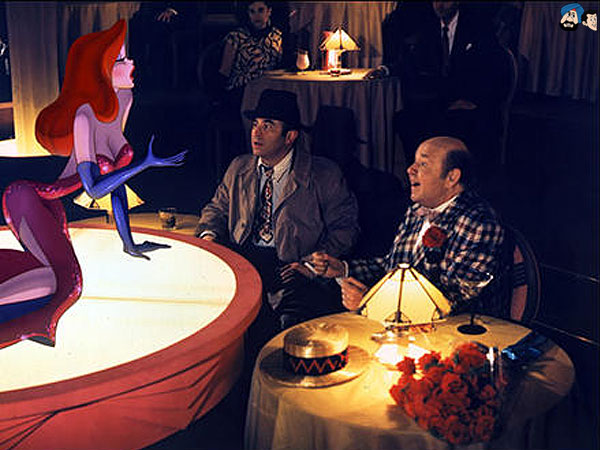
WHO FRAMED ROGER RABBIT JESSICA RABBIT SCENE MOVIE
That's a pretty audacious motif in a work ostensibly for children, and when you add the superimposition onto the crowded thematic canvas of a top-notch spoof on film noir, you've got a movie working overtime in the ideas department. These "toons," as they're called, make up a kind of movie-industry underclass that is exploited for profit-making laughs. The story's ingenious conceit is that human-created cartoons, including some of the most recognizable characters in the animated species, coexist with Homo sapiens - off-screen and three-dimensionally, that is. It doesn't get more subversive than that. Beneath the well-crafted jokes and cartoon high spirits, the film gnaws at the nostalgia felt for an Old Hollywood that so blithely manifested deep American racial disparities, and it does so while featuring cameos by the likes of Yosemite Sam and Tweety. But it's the unflinchingly allegorical elements of Roger Zemeckis' 1988 film that claim the most interest. And Disney has tinkered with the animatronic antagonists in the iconic Pirates of the Caribbean ride for decades, including changing depictions of women being chased by pirates in 1996 and then in 2017 removing a scene featuring a woman being auctioned.As a mixed live action/animated tour de force and a technical marvel, Who Framed Roger Rabbit holds an entrenched spot in the pantheon of movie originality.

Last summer, Disney’s theme parks vowed to “completely re-imagine” its popular Splash Mountain attraction, replacing the ride’s influences from the controversial 1946 film Song of the South and rebooting it as a nod to the 2009 animated favorite The Princess and the Frog featuring Disney's first Black princess. In July, Disneyland unveiled a revamped Jungle Cruise ride that removed “negative depictions” of native people and added more diverse characters to its story. Stephen "Dirk" Libbey September 16, 2021ĭisney’s decision to tweak Jessica Rabbit’s role in Toontown is the latest in a number of sweeping changes the company’s theme parks have made in the name of more contemporary and more culturally sensitive optics. The character was recently removed, though, and replaced with barrels of acid.ĭoes somebody really think that putting Jessica Rabbit in a trenchcoat and fedora is going to de-sexualize her and not, you know, do the exact opposite of that.


Since the ride’s 1994 opening in Mickey’s Toontown at the flagship Anaheim, Calif., theme park, the red-headed, sultry-voiced nightclub singer - originally voiced by Kathleen Turner in the 1988 box-office hit - could be spotted tied up in the trunk of a car. Fans are - stop us if you’ve heard this one before - both applauding and ridiculing the move. While the va-va-voom cartoon version will remain intact in the feature film directed by Robert Zemeckis, the Jessica Rabbit featured in Disneyland’s Roger Rabbit’s Car Toon Spin ride will be redesigned to be more empowered and far less scantily clad. The popular character, though, is getting a makeover.
/cdn.vox-cdn.com/uploads/chorus_image/image/67638591/who_framed_roger_rabbit_disneyscreencaps.com_3940.0.jpg)
As Wikipedia helpfully explains, Jessica Rabbit is “renowned as one of the best-known sex symbols in animation.” That makes Who Framed Roger Rabbit?’s beloved - and famously busty - femme fatale an anomaly in the otherwise reliably family-friendly world of Disney Animation.


 0 kommentar(er)
0 kommentar(er)
